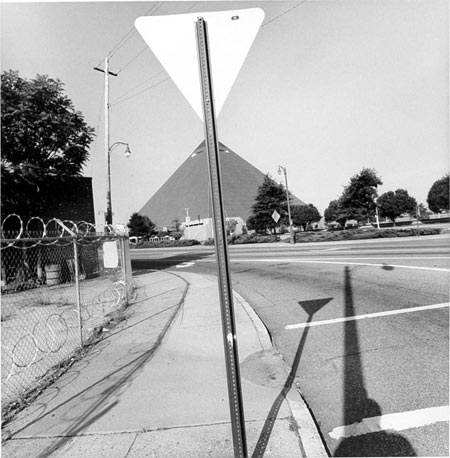
Lee Friedlander is one of the most celebrated American photographers alive today. And for good reason. He’s a master of his craft, creating captivating, influential images. When there’s the opportunity, then, to view a wide range of his work, one should not hesitate.
This is exactly what you’ll find in the exhibition “1960–2010 or How I Got from There to Here in 100 Pictures or Less.” The exhibition will feature two images from each year, 1960 to the present, for a total of one hundred black-and-white images spanning the artist’s entire career (Friedlander had his first solo exhibition at the International Museum of Photography at George Eastman House in 1963).
Not only will viewers be able to see the changes in Friedlander’s style and focus over the past fifty years, as well as make connections between subject matter, you’ll also see his evolving printing styles. Friedlander works alone. He takes and personally prints every one of his images. For this show, he has, for the most part, provided images that were printed around the time they were photographed.
Evident, too, is Friedlander’s camera/format changes; early in his career, the photographer used a 35mm Leika and later moved on to a Hasselblad Superwide camera.
Friedlander is known for photographing what he sees around him, the “social landscape” of modern life. Early influences include, not surprisingly, Robert Frank and Walker Evans. He has also captured dramatic natural landscapes and took portraits, including many self-portraits — a constant throughout his career. (One of Friedlander’s more famous portraits were the late-1970s photos of Madonna, which appeared in the September 1985 issue of Playboy.)
The images for this show, which were chosen by the artist and gallery owner Jeffrey Fraenkel, are ones that most Friedlander followers will be familiar with, including images shown in his 2005 MOMA retrospective. There will also be photos from the artist’s seminal 1989 “Like a One-Eyed Cat” exhibition at the Seattle Art Museum, the 2008 Fraenkel Gallery exhibition “America By Car” (which is currently on exhibit at the Whitney Museum of American Art through November 28, 2010), as well as a group of new images from recent years that have never been shown before.
Throughout we see Friedlander’s signature approach to framing his shots — with doorways, street signs, fences, windows — his effective use of reflections in mirrors and windows, and the stunning use of light. Most of all, we get to experience half a century of seeing our world through the lens of someone who’s been focusing on it almost daily. That’s something worth giving a good long look at.
